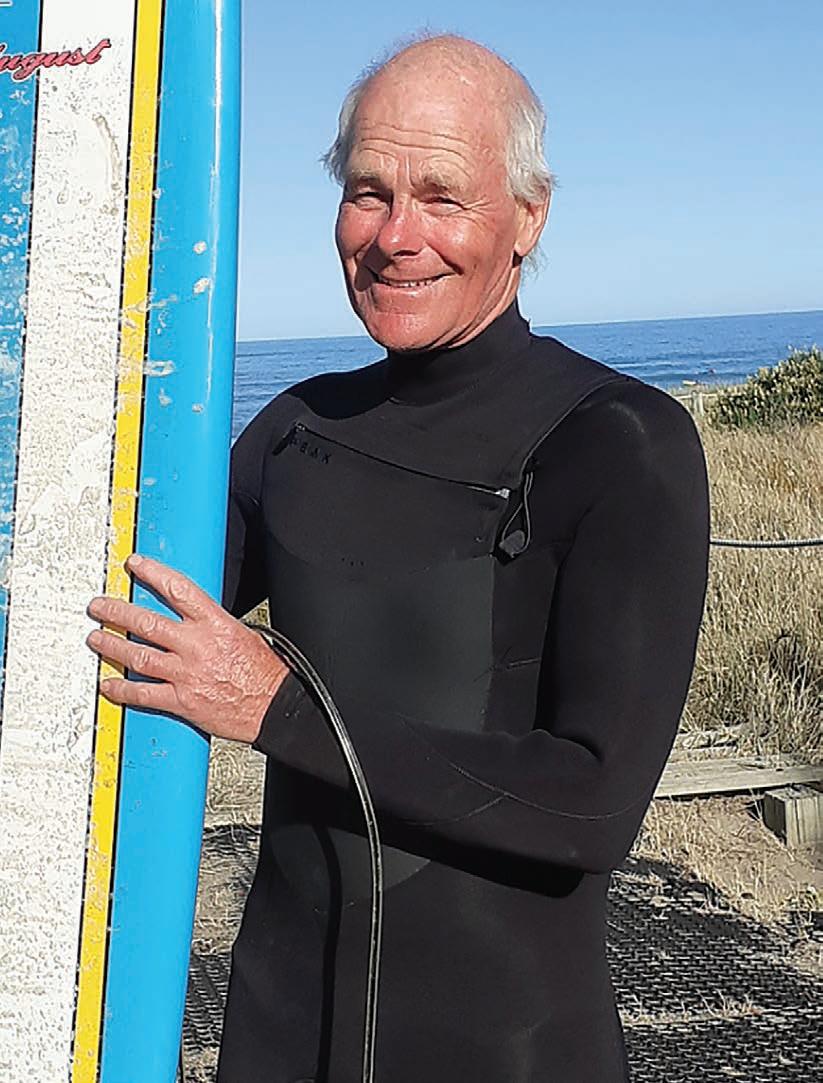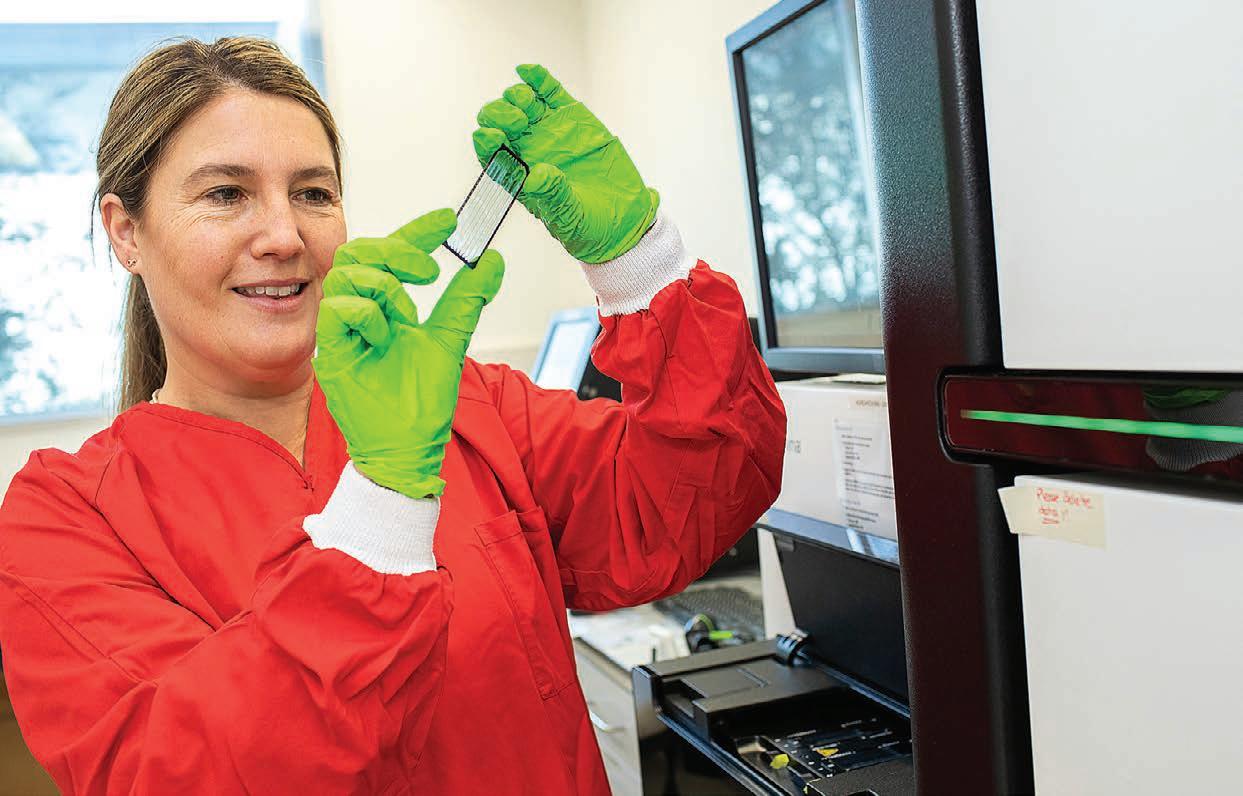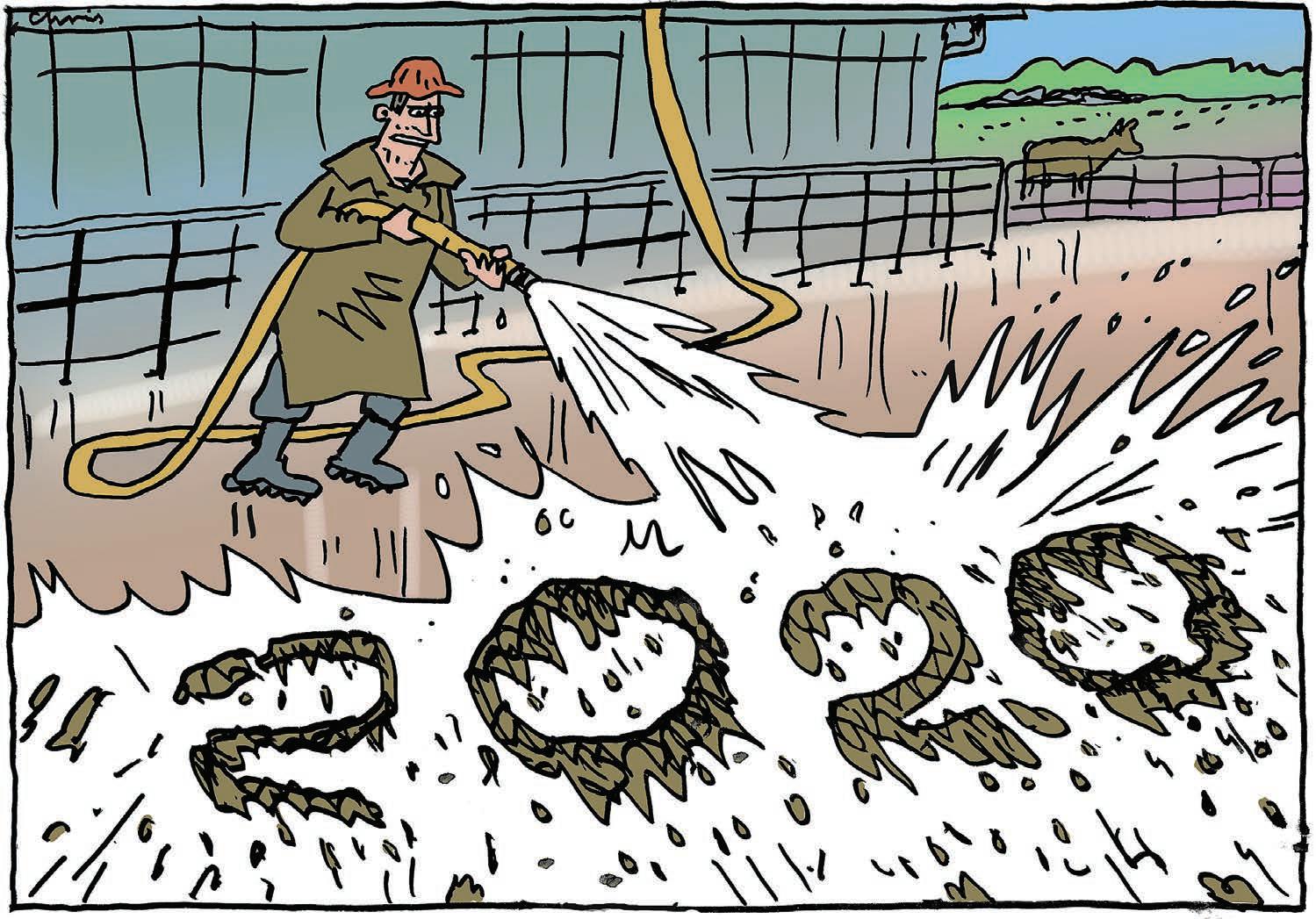
5 minute read
Newsmaker
Lifetime’s work wins top award
Long-time soil scientist Dr Stewart Ledgard received the Lifetime Achievement Award at the 2020 Science New Zealand Awards with characteristic humbleness. But his work has been at the leading edge over one of the most significant periods of NZ agriculture. He spoke to Richard Rennie.
THROUGH the 60s, 70s and 80s New Zealand soil science was underpinned by a vanguard of scientists who undertook groundbreaking research into turning NZ’s young soils into productive pastoral businesses. A pantheon of respected names like Professor Thomas Walker, Mike O’Connor, Doug Edmeades and Keith Cameron all feature as often in academic papers as they do in farmer conversations.
Dr Stewart Ledgard is included in that roll call as another who has played an integral part in many aspects of NZ’s modern soil research.
He attributes the likes of the late O’Connor and Walker for their applied, practical stance when it came to research’s relevance and ensuring farmers were made aware of it.
It is a trait he says he has also worked hard on to continue.
“My time at Ruakura with Mike stands out to me – he always stressed the need to ensure your work was applied, that it could be picked up by farmers,” Ledgard said.
Over the 40 years of his career, Ledgard says the biggest shift has been from simply studying how to grow more grass, to growing it with a focus on the environment, while acknowledging the need to deliver a sustainable profit in the farm business.
That work has included being a founding researcher and developer of Overseer nutrient model. Today’s software, with its multiple mitigation algorithms, can seem a far cry from the base nutrient model Ledgard initially developed with a team 25 years ago.
“It started with a fairly simple philosophy as a nutrient budgeting tool to make farmers aware of being more focused on the efficient use of fertilisers,” he said.
Today the tool has many facets to allow for nutrient losses and mitigation techniques.
“But despite that, it has remained consistent as can be related to a farm system. You can do ‘what if?’ scenarios – that practical usefulness is still there,” he said.
Over a long career, a couple of pieces of research stand out among the myriad of papers and studies he has concluded.
“The earlier work we did with Arnold Bryant at Ruakura No.2 dairy – this showed the effects
COMMITTED: Dr Stewart Ledgard has been recognised for his lifetime commitment to agricultural science.
of high annual nitrogen (N) application. It showed once you got above 200kgN a hectare, although production continued to rise, the environmental impacts were large,” he said.
“But I was surprised and encouraged how many farmers took note of those negative effects and didn’t go to those levels – it was good to see.”
He was also closely engaged in the early 2000s with farmers and policy makers in limiting Lake Taupo’s nutrient loading to preserve the lake’s purity for generations to come.
Dr Stewart Ledgard AgResearch
“It ended up with practical solutions, and the farmers affected by it knew where they were with it,” he said.
The limitations around the lake’s catchment have even helped give birth to some new farming opportunities, including sheep milking.
Ledgard continues to do work on N losses in the neighbouring Rotorua Lakes catchment, one that has proven more problematic and slower to reach a resolution over the years.
More recently he is working providing a researched voice of NZ agriculture at high level EU committee meetings on whole of life environmental footprints of agricultural products. That voice is important as the EU moves towards requiring environmental footprinting information as a condition of trade access in coming years.
“It’s important for NZ to get our products compared fairly to those produced differently overseas, the differences are great and NZ has shown to have a low footprint from pastoral production, even allowing for the methane emission,” he said.
Today he is optimistic NZ’s ability to manage nutrient losses has matured in the past decade.
“When DCD (nitrate inhibitor) came out 10-15 years ago, we thought it could be a silver bullet solution and we could keep farming as we always had,” he said.
But, today he believes farmers need to understand how multiple small changes to farm systems can add up to big savings in losses to waterways and atmosphere.
In the meantime, he is also encouraged by a new generation of passionate, intelligent PhD graduates now working in AgResearch as well as those he
EXCELLENCE among researchers and scientists in
New Zealand’s Crown Research
Institutes (CRI) was recognised at the annual Science New
Zealand Awards held on
December 3.
The Early Career Researcher category recognised primary sector researchers Dr Nik
Palevich of AgResearch, Dr
Rachelle Binny of Manaaki
Whenua-Landcare Research,
Dr Lisa Evans of Plant & Food
Research and Dr Kelly Wade of
Scion.
Alongside Dr Stewart
Ledgard receiving AgResearch’s
Lifetime Achievement Award was Bruce Warburton of
Manaaki Whenua-Landcare
Research for his work that has included extensive research on possum control and managing
TB spread.
Russell Lowe of Plant & Food
Research was also recognised helped oversee as an adjunct professor at Massey.
“These young scientists have a real passion and drive for what they do, which is necessary in the current complex and difficult research funding scene,” he
Crown researchers recognised at awards
said. for his kiwifruit breeding achievements, and Greg Steward from Scion for his extensive work on indigenous forestry for over 40 years.
AgResearch’s pastoral genomics research team took the AgResearch team award for leading the development and implementation of new plant breeding systems and genomics which has helped double rye grass’s genetic gain.
The Red5 kiwifruit genome sequencing team at Plant & Food were recognised for their work in better understanding the genes controlling kiwifruit’s desirable traits.
Scion’s geomatics team were awarded that organisation’s best team for efforts in hyperspectral imaging and deep machine learning techniques for mapping.








